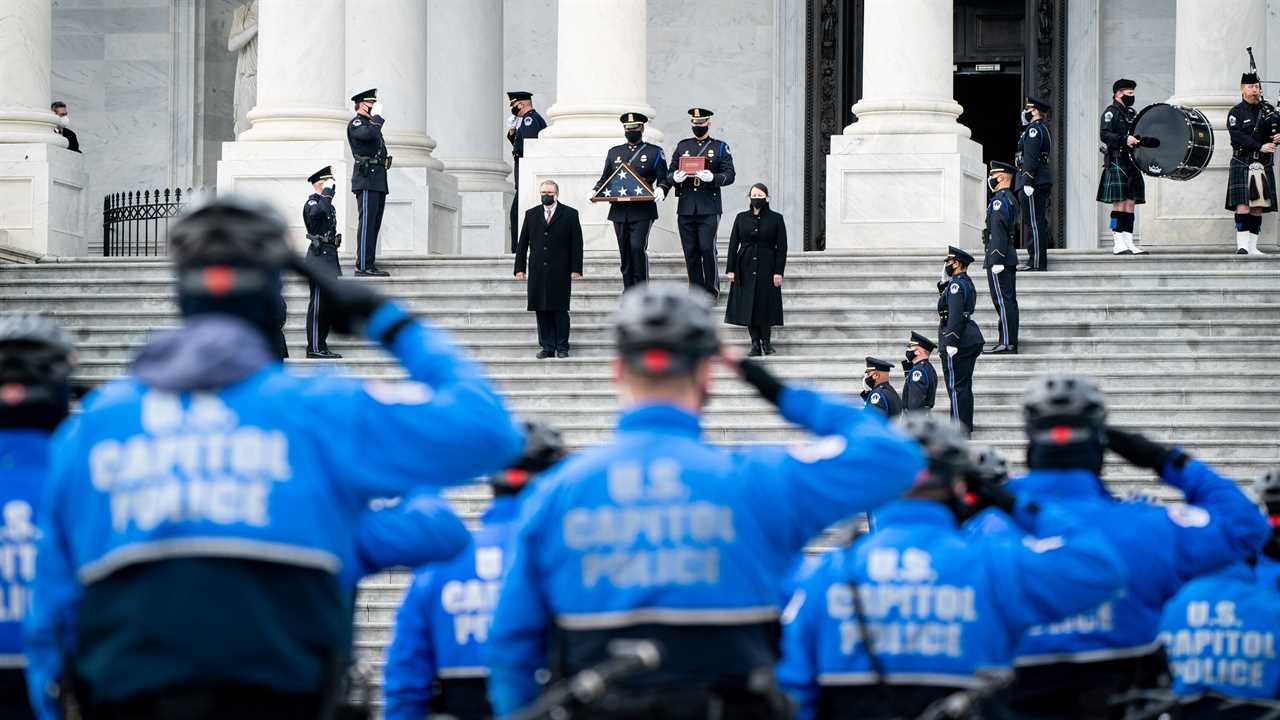
WASHINGTON — The F.B.I. has pinpointed an assailant in its investigation into the death of Brian D. Sicknick, a Capitol Police officer who was injured while fending off the pro-Trump mob that stormed the Capitol last month and later died, according to two law enforcement officials briefed on the inquiry.
The F.B.I. opened a homicide investigation into Officer Sicknick’s death soon after the Jan. 6 attack on the Capitol. Investigators initially struggled to determine what had happened as he fought assailants. They soon began to suspect his death was related to an irritant, like mace or bear spray, that he had inhaled during the riot. Both officers and rioters were armed with such irritants during the attack.
In a significant breakthrough in the case, investigators have now pinpointed a person seen on video of the riot who attacked several officers with bear spray, including Officer Sicknick, according to the officials. And video evidence shows that the assailant discussed attacking officers with the bear spray beforehand, one of the officials said.
While investigators narrowed potential suspects seen in video footage to a single person this week, they have yet to identify the assailant by name.
A Justice Department spokesman declined to comment.
Given the evidence available to investigators, prosecutors could be more likely to bring charges of assaulting an officer, rather than murder, in the case. But the death of Officer Sicknick, a 42-year-old Air National Guard veteran who served in Saudi Arabia and Kyrgyzstan, could increase the penalties that prosecutors could seek if they took such a case to court.
Irritants like bear spray, pepper spray and mace are considered to be nonlethal crowd control deterrents, but they can cause physical reactions that could create risks for people with underlying health conditions and disorientation that could lead to injury.
On Jan. 7, when Officer Sicknick died, the Capitol Police issued a statement that said he “was injured while physically engaging with protesters,” and then “returned to his division office and collapsed.” He succumbed to his injuries at the hospital.
Besides Officer Sicknick, two other officers who tried to defend the Capitol later died, both by suicide, according to the local police. At least 138 officers suffered injuries ranging from bruises and fractures to concussions, burns and even a mild heart attack, ranking it among the worst days for law enforcement injuries since the Sept. 11, 2001, terrorist attacks.
In the hours after Officer Sicknick was rushed to the hospital, officials initially said that he had been struck with a fire extinguisher. They later said that there was no evidence to support that he had died from any blunt force trauma. More recently, F.B.I. officials homed in on the potential role of an irritant as a primary factor in his death.
The Justice Department on Friday also indicted six members of the far-right nationalist group the Proud Boys with conspiracy to obstruct the certification of President Biden’s electoral victory and to attack law enforcement. The suspects, who had already been charged by criminal complaint, were also accused of threatening a federal officer and entering the Capitol carrying a deadly or dangerous weapon, including a wooden ax handle.
Federal prosecutors said that Louis Enrique Colon of Missouri, Felicia Konold and Cory Konold of Arizona, and William Chrestman, Christopher Kuehne and Ryan Ashlock of Kansas were part of a group of Proud Boys who traveled to Washington in order to “stop, delay, and hinder the congressional proceeding” on Jan. 6.






